L'atelier du Formateur - Classe virtuelle : Work and play et l'apprentissage multijoueur.
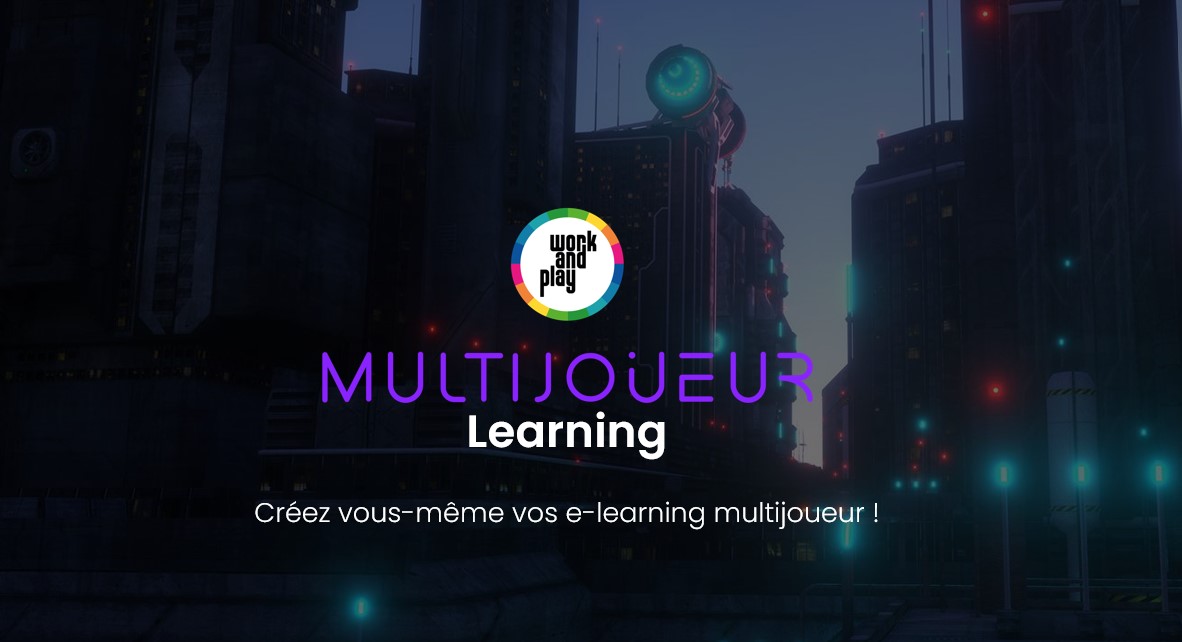
Classe virtuelle - Vendredi 24 juin à 14h00
Animation : Isabelle Dremeau et Jean-François Le Cloarec
Invité : Work and Play
10 places gratuites


Animation : Isabelle Dremeau et Jean-François Le Cloarec
Invité : Work and Play
10 places gratuites


Work and Play vous propose de découvrir une innovation unique sur le marché : Créez facilement vos formations e-learning en multijoueur grâce à notre outil de création en ligne, puis jouez toutes vos sessions en équipe avec visio intégrée.
Découvrez les avantages du e-learning multijoueur !
Durée : 45 minutes
Intervenant : Pierre-Olivier Mouton, CEO de Work and Play
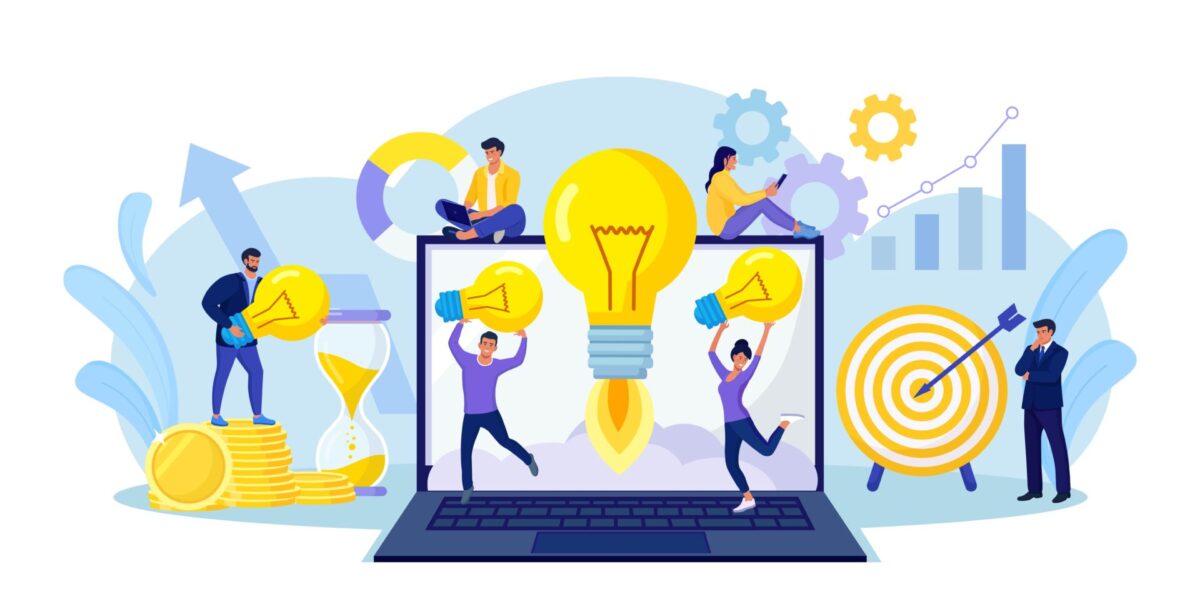
Développé à l’origine par l’armée américaine pour entraîner et évaluer son personnel, ce principe englobe tout jeu qui a un autre objectif que celui de s’amuser. Dans les entreprises, les serious games peuvent aider à répondre à divers enjeux RH, du recrutement au management de talents. Si ce sont surtout des solutions numériques qui sont connues aujourd’hui, à ses origines et dans les années 1960 et 70, un serious game pouvait prendre la forme d’un jeu de carte ou de plateau sur le modèle des jeux de société, ou encore des jeux de rôle. Cette modalité d’apprentissage et d’évaluation se fait aujourd’hui l’allié des employeurs dans les diverses transformations d’entreprises.
1. The serious game: definition of an engaging method
A teaching composition. Serious games generally have a real architecture based on one or more specific objectives and may include levels to be validated or obstacles to be overcome. Unlike gamification, which we discussed recently, which is more about generating interest and engaging employees, the serious game has a specific learning or skills assessment objective.
An inspiring experience. Mêlant le divertissement et l’envie d’obtenir un résultat ou d’arriver la fin du parcours, les mécanismes du jeu structuré font appel à l’esprit de compétition des joueurs. Par exemple, le tableau de bord peut afficher un classement de la performance ou rappeler la récompense à la clé. En se focalisant sur des objectifs positifs, les joueurs s’impliquent davantage dans le processus d’apprentissage, d’évaluation ou de découverte de l’entreprise.
Motivational processes encourage commitment and mobilise the attention of participants. The serious game uses different game levers such as juggling information, valuing scores to maintain motivation and optimal concentration.
A fun and less painful or daunting approach to skills development. The serious game appeals because of its originality, but also because of its cognitive process which facilitates the anchoring of knowledge and offers a positive employee experience which will certainly reinforce the company's employer brand.
2. The serious game boosts HR missions
Serious games can be used for a variety of purposes, the three main ones being the development of skills, recruitment and the integration of new employees. In the wake of the 100% telework on the French, the possibility of taking part in a digital serious game shows the organisation's open attitude and its interest in new ways of working. Knowing that a large proportion of French employees wish to continue teleworking on a part-time basis.
The recruitment market has evolved rapidly, driven by online platforms and innovative methods, and employers need to take every opportunity to attract the best profiles, especially for shortage positions. In addition, Finding the right profile on paper must now be accompanied by behavioural complementarity. The recruitment process has to face this double challenge. For their part, candidates are looking at their opportunities more carefully. The questions raised by the health crisis and the time for reflection have made them more attentive to the terms of employment and the work environment.
The serious game fits perfectly into the distance learning culture developed over the last 20 months. It can be conducted remotely and sometimes asynchronously. For companies recruiting abroad, it can also be translated into different languages.
For the recruitment of junior profiles, the serious game allows a company that is not on their radar to catch their attention. Faced with the ineffectiveness of the traditional CV and cover letter application, companies with significant recruitment in this age group have jumped at the opportunity to update their approach by offering recruitment steps that can be carried out directly on a smartphone. In this way, the serious game helps to promote an innovative employer brand geared towards new uses.
Another value added, the serious game provides a more realistic assessment of candidates and aims to reduce the stress level of candidates by providing a expérience ludique. Through an immersive course, the participant is directly put into a situation, which allows recruiters to better discern his or her character traits and analyse his or her behaviour in certain situations. This is an effective recruitment tool for identifying the soft skills of a candidate, the serious game highlights stress management or the ability to quickly decipher a situation and make decisions. The situational mode of assessment also reduces the impact of cognitive biases on the selection of profiles, as it does not take into account the gender, age or origin of the candidate.
For the candidate, it is a way of anticipating the type of experience he or she will face in order to better to see the reality of the position for which they are applying. Along the way, the serious game can help to highlight the work environment, the role of each person and possibly the work processes that will be used on a daily basis.
Efficient integration of new employees is a major challenge in recruitment, since this pivotal period in the employee experience can subsequently lead to departure or, on the contrary, to greater commitment. A serious game that supports the onboarding of an employee will accompany them in their first steps in the organisation and help them become familiar with cultural codes and understand the different parts of the organisation.
Through game mechanics, les nouveaux collaborateurs prennent leurs repères et adoptent une approche proactive devenant ainsi acteurs de leur intégration. For example, a contact-oriented serious game scenario can help shy people to approach others, ask questions and explore the premises as they progress through the game.
Due to skills obsolescence, les efforts de formation en entreprise vont s’intensifier et faire davantage partie du quotidien des salariésThe serious game will then animate the learning process and make it part of the telework modalities. The serious game will then animate the learning process and make it part of the telework modalities. It will also make training more accessible to new categories of employees who are developing as a result of the health crisis, such as nomadic workers.
Through its unique and playful approach, the serious game facilitates the acquisition of informationThis is particularly true for processes related to complex situations. According to Belgian researcher Emilie Gaspard from the Université Libre de Bruxelles, active decision-making renforce l’activité de notre cerveau. Ce même mécanisme est à l’œuvre dans un serious game et renforce l’apprentissage de compétences spécifiques par une pratique virtuelle presque immédiate des nouveaux acquis.
The serious game promotes the right to make mistakes, which is crucial in a training course. The game encourages trying sometimes unusual solutions, where few work situations offer this possibility. An important game mechanism is to provide a space for experimentation, inviting participants to exercise their creativity and sense of logic. It is about testing hypotheses that they build up with the help of the information given by the game. In the end, making mistakes is an accepted part of the game, as long as they are used to progress and achieve the objective of completing the game.
Finally, the digitisation of the serious game makes it possible to monitor the progress of learning in real time and to obtain measurable data. It offers more precise and immediate insights than a traditional training course. Aspects that need to be reviewed or repeated are highlighted and it is easy to target learning on weak points and topics that are struggling to be assimilated and makes the personnalisation de l’apprentissage more accessible. The frequency of the sessions, the levels to be repeated, the repetition of questions, these elements can be modulated according to the progress of the participant thus avoiding the frustration of an inadequate learning process.
The serious game may also supporting a cultural and behavioural transformation of the organisation. If it is high time to establish healthier and more positive dynamics, the serious game played by teams stimulates interactions and reveals problematic functioning. Dealing with these behaviours in a virtual environment where it is possible to try again with a different approach shows employees that another way of doing things is possible and sometimes more appropriate. An escape game with predefined timing can help to improve communication, especially in situations under pressure. In another case, the game can help to resolve a situation where there are divergent opinions and help employees to better accept the ideas proposed by their peers.
Although the list of soft skills is long, here are some that are suitable for serious games:
Anyway, the serious game can only keep its promise if all the players are involved in the process.
In a more global and strategic way, the serious game allows you to explain your company's missions in a more meaningful way and to translate its values in a relevant way, moving from theory to practice. In this sense, it offers a response to the famous quest for meaning intensified by the health crisis. Through the serious game for recruitment, the candidate is immersed in the organisation's activities to get a better idea of the reality of the position et si ces conditions le motivent. Dans le cas d’une formation, l’apprentissage met l’employabilité au centre et rappelle au collaborateur les raisons pour lesquelles il a rejoint l’entreprise et choisi ce métier. En se plongeant dans un univers virtuel, on s’immerge dans une bulle le temps du jeu ce qui peut contribuer à faire baisser les barrières et le stress du quotidien. Cette expérience hors du temps déclinée au mode collectif rassemble et invite à renouer les liens après une période d’isolation and regain a common sense.
The preparation of a serious game must primarily integrate the evaluation objectives, learning objectives or loyalty objectives . It is therefore a question of asking yourself the right questions to help you develop the game's plot:
- What is the educational objective? What skills need to be learned first and which ones are secondary?
- What skills will be tested during the game? Is the level of digital skills of the participants appropriate? What digital tools do they have?
- How can serious games improve people' work life?
- What are some of the other benefits that may lead participants to play this game?
Rely on storytelling of the game. The principle of a serious game is that it should be memorable and make learning fun. An engaging design and writing will help to increase interest and therefore memorization with the help of meaningful situations such as a recurring customer case or crisis management.
Reducing resistance to serious games. The technology is accessible and the participation is flexible and volunteer-based, making it easy to get started with the game.
Communicate on the project. A number of communication actions are available to you. The presentation of the serious game must be similar to it. Why not make a quick video presentation that you can distribute in an email campaign or integrate into the company's career site. In the case of training, HR and managers must be sufficiently trained in the tool to answer employees' questions.
Be aware of the regulations on HR data. Lors de leur participation à un serious game, les participants devront donner un certain nombre d’informations. Dans ce cadre, l’entreprise doit veiller à bien expliquer aux candidats le fonctionnement de la méthode par rapport au recrutement, assurer la confidentialité des résultats et justifier de la pertinence du jeu par rapport à sa candidature. Les informations requises doivent uniquement concerner l’évaluation des aptitudes professionnelles du candidat. Le détail de sa situation personnelle, ses opinions politiques, sa religion ou encore s’il appartient à un syndicat ne peuvent être demandés selon la CNIL et les dispositions de l’article L.1221-7 of the Labour Code. In the case of rejection of an application, the information must be processed according to the applicant's wishes: either deleted or saved for future application for a limited period of two years.
Now you are equipped to decide whether a serious game project would be beneficial for your organisation especially for human resources activities. Finally, we'll give you some examples of current practices to inspire you.
As part of the transformation of the mutual insurance sector, which is undergoing strong digitalisation, Harmonie Mutuelle wanted to maintain employability through upskilling and supporting employees in new jobs in the sector. A second major issue was to be able to remain competitive against a new kind of competitor from the technological world, just like Amazon did by launching its mutual insurance offer in the United States.
The serious game is therefore part of this overall three-part approach which aims to enable employees to be more autonomous in their career paths and less dependent on their manager for their professional orientation. Launched as part of an event, the serious game invited employees to learn more about customers, their needs and the current state of the mutual insurance sector in the digital age.
The employee is better informed about his or her career development opportunities and deals more constructively with the self-service learning and skills assessment platforms made available under the programme. It is part of an HR project of which it is only one component, the serious game gives a boost to internal communication and talent management by HR.
The serious game that combines AI is meant to strengthen the group's employer brand by introducing the company's culture and discover the challenges that the group is facing The game is based on three main themes: purchasing and marketing to different types of customers, research and development of tomorrow's transport, and supply chain professions. The game lasts 10 to 12 minutes and opens with a hunt for clues in three environments: the point of sale, the laboratory and the innovative factory. Artificial intelligence guides the player who will try to solve three riddles and fifteen challenges. The game is aimed primarily at young graduates and juniors and calls on the participant's soft skills (logic, agility, imagination, etc.).
The game also allows the player to raise funds for associations that Saint-Gobain supports. As the points counter rises, the player can unlock a donation to the Habitat for Humanity association in France.
The multinational automotive organisation has created a game that trains salespeople to master different types of sales talks and customer types. The game exists in more than twenty languages in online training and in face-to-face training.
This interactive videohas been designed by a Belgium organisation to teach first aid to everyone. This is a quick and flexible way to train employees in first aid. Here, the combination of knowledge acquisition and the required speed of action equips the participants with the right reflexes to apply in a real situation.
The game Nanorider was developed by Grenoble Ecole de Management and Cea Leti in 2013 and aims to educate its players on the role of new technologies in business, even the most complex ones. In the form of a board game, the concept involves several players, each holding a title (financial management, marketing, legal director, etc.). The purpose is to make people understand that each choice to integrate innovation into the company is collective, despite the different imperatives of each stakeholder. Innovation then becomes a common issue for all in the sense that it brings solutions and values to all participants. A pragmatic proposal to get rid of preconceived ideas on innovation in the context of technological transformation, this game allows to go beyond the complexity of a new science to realise the importance of establishing a corporate culture open to innovation in order to sustain it.
With the promise of a playful moment, serious games provide a real tangible solution to the recruitment and skills development challenges in a rapidly changing workplace. By placing employees or candidates at the heart of a challenging situation using motivating game mechanisms and a structured course, the serious game offers an environment that encourages learning. It also creates the conditions for reflection on employability. All in all, serious games invite both employees and employers to position themselves and anticipate the future of work.
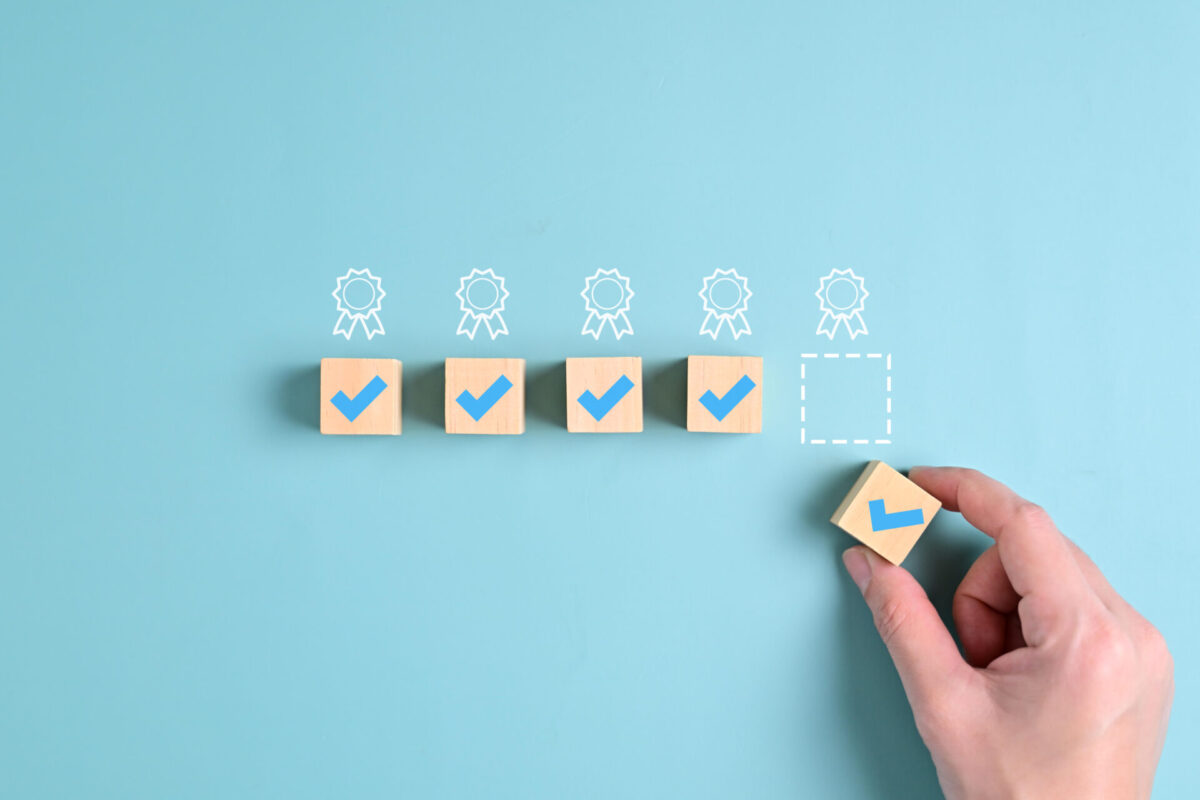
LMS platforms have been on the market for just over 20 years and are widely used in thetraining ecosystem.
As far as businesses are concerned, this is a an essential tool for HR and L&D departments responsible for managing training and the development of team skills.
Between the enthusiasm for online training and the introduction of an increasing number of educational innovations, the LMS is still a key element in the development of the training system and a key tool for business performance.
LMS stands for Learning Management System. An acronym that can also be translated as learning management system. This term therefore refers to a software designed to facilitate the administration of vocational training.
The LMS is for all organisations that need to share learning resources and monitor the progress of learners. This could be schools and training organisations, for example. But also businesses, of course, particularly in the context of their strategy for the employees' continuing education.
Principles objectives of using a LMS plateform are :
On the LMS platform marketThere are two types of learning management systems: the proprietary LMS and the open source LMS.
Proprietary" LMS platforms are packaged solutions provided by editors. This type of tool is hosted and maintained in SaaS by the provider. This LMS can therefore be deployed and use quickly.
Furthermore, maintenance, including updates and the addition of new features, is managed directly by the provider. The proprietary LMS is not free. However, it saves an additional resource dedicated to managing the IT and technical aspects of the software.
On the contrary, open source training platforms are publicly available and free of charge. Developed by communities of contributors, they offer great freedom of customisation.
However, this type of LMS requires specific skills to install it on the server, configure it and maintain it. It is therefore necessary to have an internal IT department with these skills or to call on a specialised service provider. The implementation of the platform is therefore generally longer and its overall cost sometimes higher.
The notions of "Learning" and "Management" are part of the LMS system. This online training platform is therefore mainly aimed at two types of users: the administrator on the one hand, and the learner on the other.
The administrator is he or she manages the LMS platform. Depending on the size of the organisation, it may be part of the training department or HR.
The administrator's responsibilities are as follows:
In short, the administrator is responsible for setting up, managing and maintaining theorganise the operation of the learning platform. This is done with a specific focus on the pedagogical and organisational objectives of corporate training.
The learner is the second user of an LMS. Thanks to this online training platformThey can access the educational resources provided by their organisation.
Usually, learners are divided into groups on the education management system. There are many ways to do this, such as :
Therefore, the training path assigned to a new employee can be, for example, different from that of a technical manager.
On a learning platform, there is therefore a manager on one side who " distributes " the training, and a beneficiary on the other side who receives it. Both are linked by the LMS platform.
And what about the training content ? How to create an e-learning course for the LMS platform? For this purpose, a third user is in charge of designing the learning paths and, thus, ofexpanding the course library of an LMS. He is the editor of the content.
To provide an effective training offer, it is necessary to provide relevant and up-to-date training content. This is done in line with the expectations of the learning community, the organisation's training project and/or the "compliance" requirements of certain regulatory training courses.
The content creator, or training designer, takes responsibility for the creation of course modules to meet targeted learning objectives Depending on the size and organisation of the company, it may be a :
The e-learning contents published on the LMS platform come in different formats: documents, videos, infographics, quizzes, etc. Indeed, making training attractive and fun often involves diversifying the types of e-learning modules.
However, it is important to bear in mind that, initially, LMS platforms were only designed to store content and then distribute it. They are not really designed to create content. On the other hand, they are specifically designed to interface with other authoring tools like Adobe Captivate or Powerpoint. The files created with the tools used to compose the learning paths can then be " downloaded " by the training platform
E-learning modules can be :
In both cases, the ability for files to be compatible - whether it is off-the-shelf or bespoke content - is made possible by the SCORM standards (Sharable Content Object Reference Model). This allows the transfer of digital training from one LMS to another.
Nevertheless, more and more organisations are seeking means to designing training content themselves. To respond to specific business needs or to help them develop their teaching techniques, for example.
En ce sens, il est alors nécessaire pour ces entreprises de s’équiper d’outils-auteurs annexes ou bien d’opter pour une new generation LMS platform that offers such a feature.
A LMS platform is generally referred to as an e-learning platform. However, there is more to it than that, as this technology was originally designed for management purposes. Beyond the HR learning aspect, for the organisation, it is mostly a practical way of :
Thus, it is true that an LMS platform allows the target audience to follow online courses. But its possibilities go much farther, thus responding to the different challenges businesses
A LMS platform can be used to provide access to continuing education and training; make onboarding more effective; optimise the monitoring of training courses; support the HR function and enhance employees' expertise. The benefits of a LMS platform for businesses are numerous.
Organisations can leverage training to improve their performance. However, although face-to-face training is still relevant in many organisations, it also has certain constraints such as costs, resource management (material and human) and time constraints.
In these circumstances, it is sometimes difficult for employers to train all employees at the same pace. and, thus ensuring a uniform development of the employees' skills. This can lead to frustration within teams and slow down the performance of the organisation.
The use of a LMS platform tends to reduce, if not completely erase, these obstacles to the development of continuous education. Because in a 100% online training context or a blended learning strategyDistance learning is available at any time.
From then on, access to training is easierIt is also more effective. This is true both for the organisation, for the reasons mentioned above, and for the employees, who, as we shall see later, are more involved because they have more autonomy.
The onboarding process for new hires is an important step in the recruitment process. Rather than waiting for the next face-to-face session, the LMS platform allows new hires to be enrolled in a learning pathway specially designed for onboarding.
Theuse of an LMS platform in an onboarding context allows, among other things, to :
Thanks to online resources and courses available on the LMS platformIn addition, the " new hires " are given access to certain training courses as soon as they join the organisation. After joining the organisation, they acquire new knowledge and become accustomed to the organisation's culture. This contributes to facilitating their integration since they can more naturally envision themselves within the organisation.
As mentioned above, the features of a LMS software mainly benefit the management of an organisation. Trainers and administrators can therefore produce information for training management. Just as they can collect statistics and indicators on learners' learning paths.
From an administrative and practical point of view, the LMS makes it possible to send certificates (attendance, end of training, etc.), invitations to face-to-face training sessions, online attendance sheets, certificates of conformity or evaluation, etc., as well as learning reports including follow-up data.
Produced directly by the LMS solution, reports make it possible to :
These datas have an educational purpose. Indeed, By analysing these datasThe L&D department knows more about the learning community. Training courses can then adjusted, new content can be created accordingly and the learning can be adapted.
An LMS platform is also a good option for supporting and increasing the performance of the HR function.
In fact, by using the information transmitted by the software, the HR department collectsmeasurable evidence of employees' skills, both acquired and to be acquired. It can then use this data to :
Thanks to the LMS platform, it is possible to increase employees' profiling. The LMS platform then becomes a powerful tool for talent retention and, consequently, an asset for the organisation.
As mentioned above, face-to-face training has its constraints. For the organisation, but also for the employees. Travelling, poorly adapted lecture formats, already overburdened employees' schedules... Teams may feel that they are wasting their time and thus lack concentration or motivation. In these conditions, learning does not achieve its objectives and becomes less effective.
Also, although they are not originally "learner experience" oriented, LMS platforms have shown their usefulness and also offer certain benefits to employees.
The LMS platform is an online training platform. Learners can log on whenever they want, wherever they are and at any time. Generally speaking, the LMS platform encourages employees' engagement, as employees feel that they are active participants in their professional training.
In fact, A LMS software offers the freedom to learn prevents training from being perceived as an obligation. Unlike classroom training, learners are autonomous: they can choose among different online modules and progress at their own pace.
A LMS platform can also be used to reinforce traditional training. This is particularly true when educational content, available online, is used as a :
In that context, the employee uses the LMS platform to prepare for a training action. Thus motivation gets stronger. Skills acquisition, including soft skills, is thus better understood.
In the same manner, the employee can refer to the course later on and thus reinforce the knowledge acquired. The learning process is thus a long-term one.
It is more likely to generate support than distrust, training taken on the LMS platform often generates a better engagement rate and greater employee satisfaction.
In an environment where the obsolescence of skills is getting faster and fasterToday, employability is a real concern for employees. Through the LMS platform and training, the organisation sends a strong signal to its employees that it gives attention to their career development and the development of their skills.
By investing in tools such as a LMS platform and new teaching methods, such as game-based learning, the organisation cultivates and maintains employees ' know-how, and therefore their employability. This is a winning strategy, as a continuously trained employeewith significant learning and development opportunities, is an employee who is more committed to his or her work and loyal to the employer.
Le choix d’une plateforme LMS doit répondre à deux objectifs : facilitate the training management and make the corportate training strategy effective.
It is therefore important to take the time to develop the specifications before comparing LMS platforms and choosing one solution over another.
When it comes to choosing a online training platformThe first step is to determine the project as a whole. To do this, various questions will help to identify the ideal LMS features for the organisation:
For example: a built-in authoring tool may not be useful if you outsource the production of learning content. However, you will need a system with a communication solution if you want to develop exchanges.
Establishing the overall cost of a Learning Management System platform implies the taking into account different parameters:
As mentioned earlier, proprietary and open source platforms do not require the same budgets. This is true both at the time of deployment and over time.
In addition, some editors offer certain features as part of the basic package. For others, they are optional.
LMS ergonomics and design are also criteria for choice. The online training course must be attractive. Ideally, the LMS platform should therefore be easy to use. If it is responsive and compatible with smartphone applications, this is even better. The LMS platform will then offer the possibility to develop mobile learning.
Likewise, the graphic customisation of the LMS platform is important. Especially if the tool is used to train external users such as customers, suppliers or organisations withing a franchise network.
The benefits of a LMS platform are multiple, both internally and externally. When used properly, it can serve the organisation in many different ways. Here are two examples of applications of these training platforms.
Audika, a hearing care specialist for over 40 years, is constantly expanding. It was in this context that, a few years ago, Audika decided to create a new subsidiary, the retailer has chosen to equip itself with a LMS platform. The objective was threefold: to train new hires quickly and effectively, to increase the skills of the teams in the 600 French centres and to anticipate the training obligation for the profession.
To support it in this e-learning approach, the network has chosen theLMS editor Dokeos. Between traditional training and courses accessible via the LMS platform all employees now benefit from all the benefits of blended learning.
For more than 10 years, Alinéa has been training 2,000 employees using online training. The furniture retailer is spread throughout the country. This solution is therefore the most appropriate for optimising onboarding, monitoring the ongoing training of each employee and reduce training costs.
To fulfil its ambitions, the organisation relied on the expertise ofOnline Formapro which has deployed its LMS platform called "Online Manager". This is directly linked to the HR management information system (HRIS), thus enabling precise monitoring of each learner's progress.
On the one hand, staff benefit from comprehensive and regular training. On the other hand, HR and training departments have detailed information for monitoring continuous learning.
SMEs or large organisations. Training organisations or schools for initial training. Since the 2000s, the LMS platform has become an important response to the problems of organisations in the area of vocational training management.
Also, given the accelerating development of online training and the ever-increasing expectations for a better learning experience, LMS softwares remain in the competition. Offering users more and more advanced features and a variety of teaching methods to complement the traditional training courses.There is no doubt that the learning management system has a bright future ahead of it.


Réseau Souffrance et Travail talks about Work and Play in its article : Harassment in the workplace: a Serious Game to identify, prevent and avoid it
Work and Play was at the Préventica tradeshow on 01/12/2021 in partnership with Souffrance et Travail. It was a great success! Many thanks to all the psychologists, occupational physicians, nurses, sophrologists, ergonomists, preventionists, etc. who came to see us! Harassment in the workplace is such a sensitive subject: https://work-and-play.com/demos/

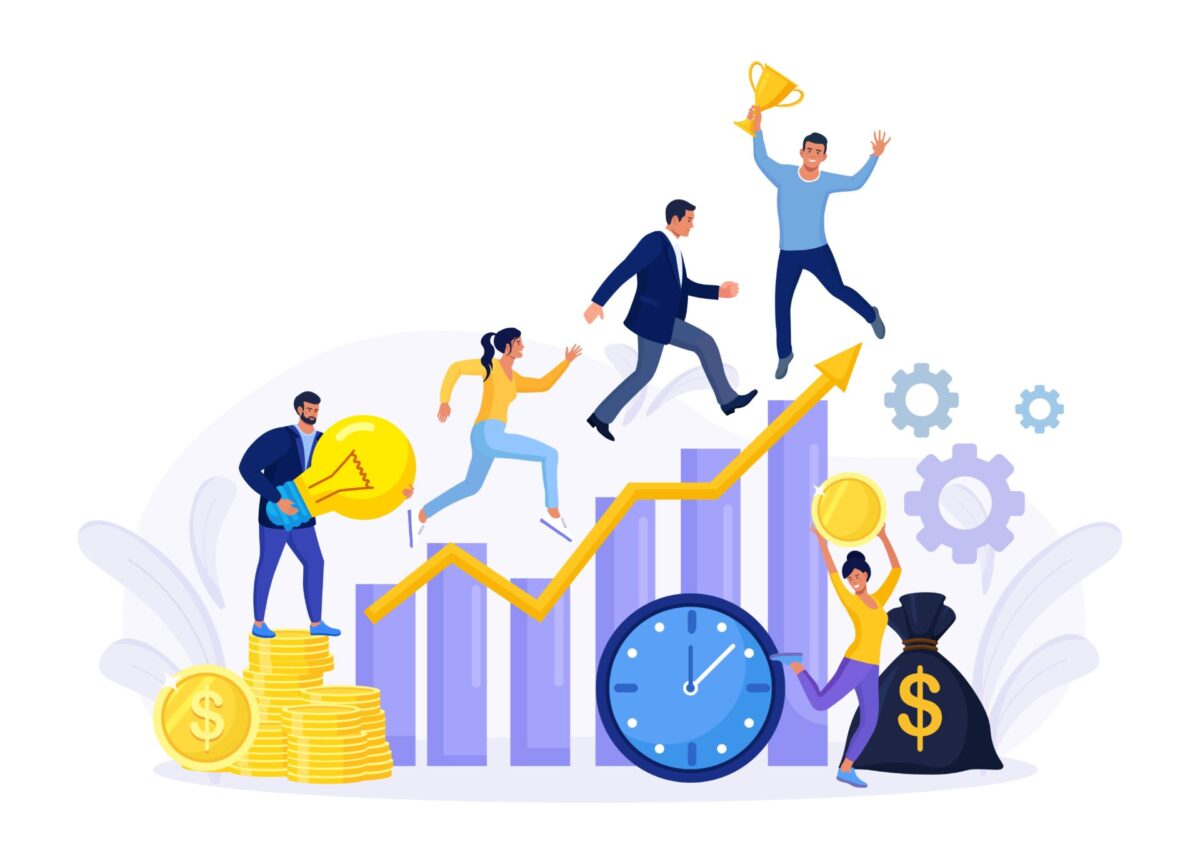
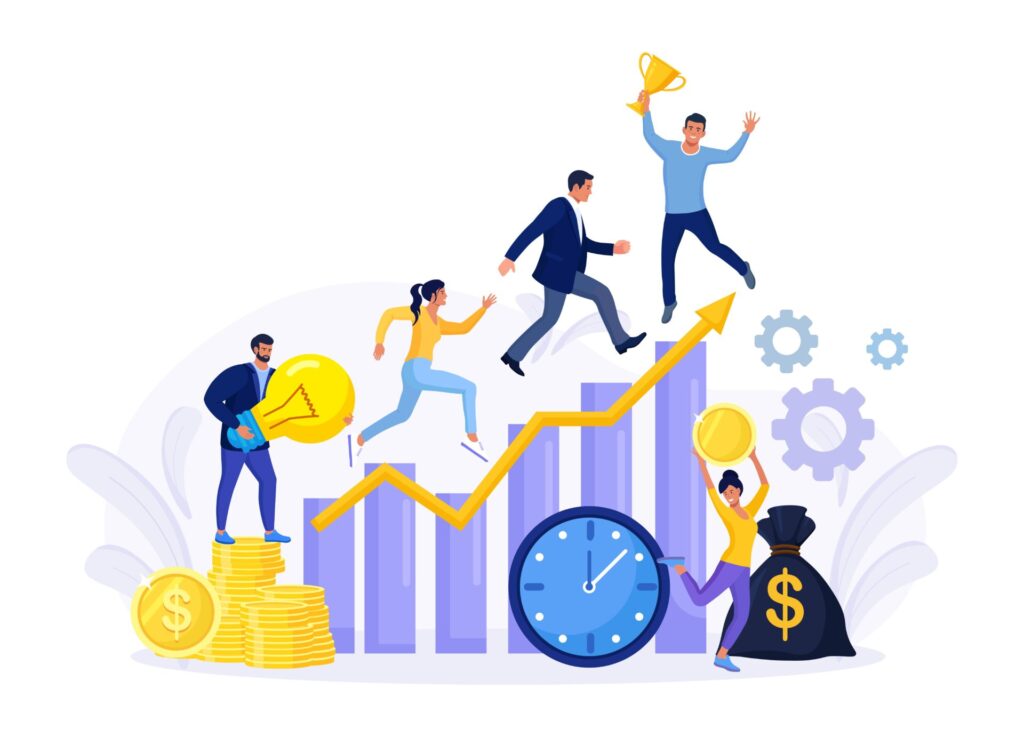
A concept that has become widely popular in the last decade, game based-learning has been transforming the business world for several years. This strategy promotes games in order to get employees to change their practices and behaviour. Also called "gamification", this concept makes it possible to find new levers of motivation towards interactive and engaging training. In a context where every organisation is considering a transformation, whether cultural, organisational, digital or other, gamification offers a creative and lively way to solve current problems.
Definition of gamification: it is actually a real trend that operates in all aspects of our lives: work, school for the youngest and everyday life. This approach, which is not so new, consists in integrating game mechanics into a context which, at first sight, does not lend itself to it. In the business world, gamification helps to present a product, a service or new information in a way that engages the target audience, stands out from the crowd and ensures that the information is properly assimilated. A study menée en 2020 par Elearning Industry démontre que 89% des employés en entreprise se sentent motivés ou challengés dans l’exécution de leur travail lorsque la gamification est utilisée. Il semblerait que la formule fasse effet !
As part of a marketing strategy, gamification makes a concept more accessible to a non-expert audience. In the context of complex technologies or innovation, the contribution of game mechanisms facilitates the understanding of the product or service. The advantage of a game experience is that it opens up the mind by immersing the player in a context that they are not used to. The target is more likely to play the game as a competitive reflex but not only (see Roger Caillois' principles of gamification below) and at the same time to remember the experience better. Internally, gamification often responds to issues related to change management and team skills development. According to a study by TalentLMS about this topic, 83% of participants who have taken a gamified course feel motivated, alors que 61% de leurs collaborateurs qui ont participé à une formation classique se sentent lassés et peu productifs. De toute évidence, les employeurs gagneraient à insuffler leur activités dites “sérieuses” d’une dimension récréative !
The 7 Pillars of the Game according to Roger Caillois :
According to Roger Caillois, the function of play is to provide security. Games allow us to master both our internal drives and our destiny. Games fall into several categories: collaboration, vertigo and risk, role, recognition, chance, individual challenge and competition. It is possible that a game refers to several motives.
In a rapidly changing world, it can be difficult for businesses to get their target customers on board or to encourage their employees to adopt new practices that are more in line with their market. To do this, it is necessary to foster cognitive flexibility and capture the attention of its target audience, which is what gamification does so well.
When it addresses the challenges of the business world, gamification commits employees to problem solving through intentional learning. Basically, it encourages them to take an active part in their professional development.
The dynamic and engaging experience at individual and group level frees the training from the burden of a more formal approach. By the same token, The casualness that characterises a playful environment reduces the notion of failure and encourages employees to move away from their usual ways of thinking and operating. Because there is no game without a sense of competition, with others or with oneself, everyone will try to overcome the obstacles and solve the riddles that stand in their way to advance to the next stage or to win the round. The game can arouse employees' curiosity, determination to win and critical thinking. Ultimately, gamification shows the power of motivation and how the level of involvement of each individual can influence the learning process.
According to a study by Harvard sur la performance des étudiants, notre cerveau est plus actif lorsque que l’on fait des choix. Il a été prouvé que les techniques de classe conçues pour amener les élèves à participer à leur propre processus d’apprentissage permet aux élèves d’avoir de meilleurs résultats éducatifs à tous les niveaux. Lorsque le cerveau est passif (écoute ou lecture) il n’est pas stimulé et l’apprenant a plus de mal à retenir les informations. La gamification ne peut qu’être bénéfique pour les apprenants.
When the game emphasises employees' creativity, creative minds and skills are stimulated to solve problems or to acquire new knowledge. In a way, gamification allows participants to get closer to innovative ideas that would normally be out of reachoff screen.
The various game mechanisms stimulate and encourage individual participation and commitment before bringing the notion of challenge to the collective level. This is why gamification offers an attractive, unifying and impactful employee and candidate experience.
The implementation of game mechanisms linked to interpersonal relations, from manager to employee for example, shows skills that are sometimes misunderstood in a different light. The different levels to be validated require the participants to use their soft skills, and the answers in case of failure say more about each soft skill dear to the organisation: leadership, empathetic listening, cognitive adaptability, stress management, etc.
Une aide pédagogique reconnue dans la formation en entreprise, la gamification mêle l’apprentissage à l’amusement. Le format interactif et ludique rend l’acquisition des messages plus rapide et pérenne, puisqu’ils ne sont pas absorbés par un mode par cœur, mais au travers d’une véritable réflexion dans le cadre du jeu.
It is important not to force employees to adopt the approach, gamification must be kept voluntary. Participation in the game, quiz or challenge must be at the initiative of the employee to avoid creating resentment, and this risks producing the opposite effect of a game situation. Without authenticity and transparency, gamification is a farce that will not keep the attention and motivation of employees for very long.
Please note that we have only focused on game mechanisms and their effects on existing programmes or content. Gamification complements a learning theme, not reinvents it. Therefore, it is important to keep it separate from serious game which involves the creation of an entire game for the purpose of simulation or immersion.
Gamification serves different strategic objectives: an organisational transformation of the business, a stronger corporate culture or a product presentation in the context of a professional event. Although gamification addresses a variety of issues, both short and long term, it is most effective in the area of learning. More dynamic, training programmes that combine games and performance significantly increase learner engagement. This makes it the ideal training ally and the ideal tool for building a learning approach to rapidly changing jobs.
HR and trainers can use gamification where learning can become boring or too repetitive. To ensure that it addresses the issues it is trying to solve, the programme will be built around clear objectives:
Successful game-based learning is not only about fun, but also about conveying ideas accurately and pedagogically. To do this, organisers need to understand the levers that apply to their target audience and incorporate them into the process. Thus, the trainer himself must analyse the situation, the group and the working environment. To structure the approach, gamification of a subject can be structured around two main axes:
Storytelling, surveys, quizzes, top five players or a points counter, various formats exist to facilitate this active learning. The final objective is to observe whether or not the new knowledge has been assimilated:
Sometimes gamification is synonymous with the gadgetisation of training. As a reminder, gamification consists solely of applying game mechanisms. It will change the format, sometimes the methodology, but not the core of the training. To avoid a misinterpretation that could result in an inconclusive training, we have compiled a list of the essential elements to remember.
What is the purpose of applying a scoring system or creating a challenge? The right questions need to be asked in order to ensure in-depth effectiveness.
Reconnecting with the excitement of learning is relevant to all issues, whether they are commercial, relational or skills development. Many organisations have infused their communications, marketing, recruitment, talent management or training with game mechanisms. Here are some selected examples.
Dropbox offers its subscribers 500 MB of data storage space each time they sponsor a new registrant. Online bank Revolut offers rewards in the form of discounts from partners such as Nike, Cdiscount and offers personalised promotions such as holiday packages. On its side, Audible adds badges to its listeners' profiles based on how often they listen (devourer, nibbler, scroller, etc.) and when they use the app (night owl, Sunday warrior, between noon and night, etc.). Finally, le programme Questions in the Sky d’Air France embarque les enfants dans l’exploration des différentes parties d’un avion. There are also a variety of answers provided by crew members. These examples show that gamification has become part of our lives, both as consumers and as employees.
Constantly looking for alternatives that are more motivating for employees than traditional training, BNP Paribas provides its managers with a gamified training tool that invites them to identify the soft skills necessary for better leadership. What's the goal? To propose a more engaging team management that is in line with the current environment. Integrated into a training module combining classic and innovative approaches, the game addresses recurring management issues. As for the recruitment aspect, Décathlon propose d’inverser l’expérience candidat avec CVCatcher by inviting Internet users to submit their CVs in order to match with avec des offres qui pourraient leur correspondre. On reconnaît là non seulement des mécanismes de jeu, mais aussi un vocabulaire tiré d’applications de rencontres, elles aussi fortement gamifiées (likes, invitations comptées, délais de réponse, etc). La gamification au travail s’inspire de nos modes de vie et des tendances de sociabilisation jusque dans l’intimité.
Ces diverses applications de la gamification montrent bien sa polyvalence. En revanche, le jeu ne doit en aucun cas prendre le dessus sur l’apprentissage. Smart gamification Smart gamification urges a real reflection on the learning objectives to spread the initiative to as many employees as possible.
HR departments can benefit from gamification, whether it is for talent acquisition, retention or internal employability development. Combining clear objectives with a fun process encourages employees. Whether it's a level to achieve, a badge to earn or a task to complete within a certain time frame, these elements encourage them to follow through and add extra motivation. Moreover, it is relatively simple to set up, as it is superimposed on pre-existing content.
In any case, be careful not to force it as this could undermine the notion of commitment and play. Gamification should be used as a win-win strategy to support the bringing on board of new information and business objectives. It should never be a source of resistance from employees.
Gamification enhances the organisation's employer brand by providing a unique candidate experience. Personality or quick skills tests remove barriers to job applications. Visually appealing and easy to access, gamified recruitment stages have several advantages. By making the candidate experience more fun, they capture the attention of prospective candidates. Recruiters can then better observe the participants' approach and thinking. Gamification allows you to get to know the candidates in an environment outside the stress of the classic job interview. It also sometimes allows the traditional cover letter and recommendations to be avoided, which is an obstacle for candidates already employed. The implementation of a gamified recruitment stage also helps to optimise CV sorting and file selection.
Due to the digitalisation of processes and the emergence of new professions, business processes and technical knowledge are constantly changing. Gamification of a learning programme or a learning assessment makes the process less intimidating and daunting for employees. When learning is made easier, learners' motivation is enhanced. Gamification also allows accurate assessment tools to be put in place, from soft skills to IT skills, often with readable and teaching performance reports.
Although there are many risks in the workplace, they rarely make for an engaging training topic. Some organisations are particularly concerned about their cyber security (for which employees are the primary culprits) while others would like to see a reduction in workplace accidents. A gamified approach to traditional risk prevention training transforms this uninspiring obligation into a source of competition and peer appreciation. If followed with more attention, intention and in a good mood, the training is more likely to make a long-term impact.
Who hasn't heard of an employee leaving for management reasons? Disengagement remains the result of frequent inappropriate management practices. It is easier to get messages across, and postures to adopt, with the help of a quiz or the accumulation of good points over time. Puisque l’acquisition de soft skills s’ancre dans une pratique quotidienne, proposer un mode d’apprentissage et d’ancrage ludique peut servir à maintenir la motivation and can encourage people to take the time to work on developing these skills on a daily basis. The acquisition of soft skills through a gamified programme is difficult to measure, but it also makes it easier to obtain measurable results.
Do your employees really know you? A challenge around themes related to the corporate culture allows us to assess their understanding while pointing out any misunderstandings that need to be clarified. Gamification is the ideal ally for teambuilding activities as it takes employees out of their daily environment and invites them to think together. A team version offers a team-building tool based on the corporate values, perfect for corporate seminars or for onboarding new hires.
The success of gamification lies in its ability to leave a deep impression. The addition of a game mechanism makes the customer, candidate or employee experience more attractive, which in turn guarantees increased engagement. Levels to validate, progress bars, distribution of badges, points to accumulate, discounts or commercial offers, a multitude of modalities exist. All you have to do is play along!

Educational Escapes Games are possible! Live, by video, as a group or alone, let yourself be tempted!

The participants are locked in a room symbolising a closed room (a castle, a pirate ship, an Egyptian pyramid, a prison, a distant planet...).
They must work together to investigate and solve the enigmas that will allow them to escape in a limited time.
Before Escapes Games happened in a real, tangible place, they were computer games called point-and-click:
C’est en 2007 au Japon, plus précisément à Kyoto, que l’on voit apparaître la première transposition des point-and-click dans le monde réel.
Des salles aux ambiances variées ont commencé à fleurir partout jusqu’à ce que la crise sanitaire oblige les professionnels du secteur à revenir sur du digital, en mode distance ou en visioconférence.
If we talk about Escapes games within an organisation, they are not just leisure moments, they also allow to :
Basically, you break out of the routine by transferring knowledge in a different way!
Vous transformez vos formateurs en maîtres du jeu et vos collaborateurs en joueurs tout en restant dans un contexte d’apprentissage.
Les Escapes Games en entreprise, c’est donc possible ! En live, en visio, ensemble ou seul, laissez-vous tenter !


Simply put, Any 2.0 trainer dreams of turning a powerpoint and a series of quizzes into an interactive and immersive experience. Do the many collaborative tools really allow this? What about games? Not serious enough, you said?
Simply put, Any 2.0 trainer dreams of turning a powerpoint and a series of quizzes into an interactive and immersive experience. Do the many collaborative tools really allow this? What about games? Not serious enough, you said?
Gamification is successful when it enables learners to be more effective because they have understood the levers and issues that govern their work environment. The transition from traditional training to digital training is then successful.

Transforming a traditional training course requires the designer to think differently, to ask questions.
What should learners remember?
What will really help them to become more qualified?
What will enable them to improve their daily work?
Once the answers are found, the transformation can take place:
Immerse your participants in a storytelling, an investigation or an escape game!
Then launch your first activity: get them to interact!
Set the tone for your experiential training!
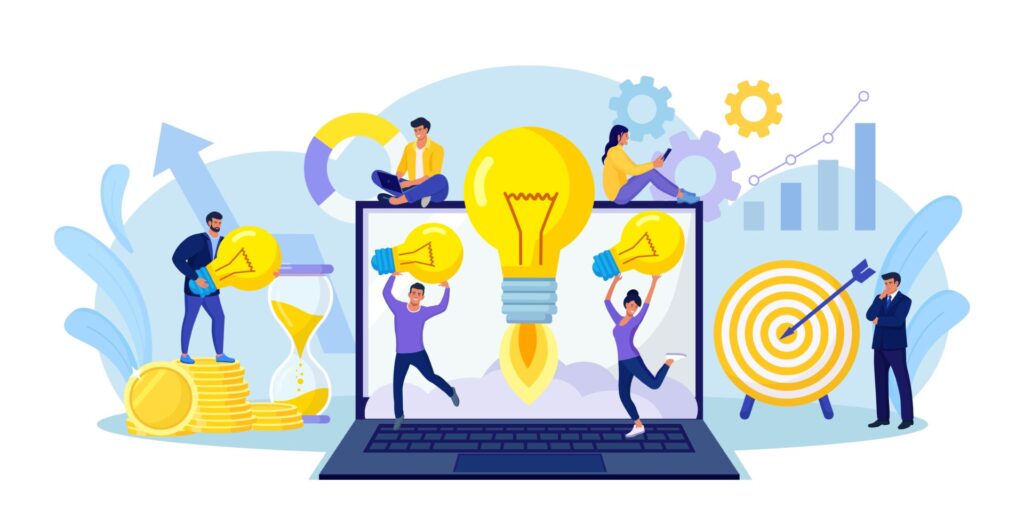
L’objectif est de jongler avec les principes, de se familiariser avec les notions complexes, de s’approprier les nouvelles connaissances et d’acquérir de nouveaux soft skills.
And thanks to the various levers of the game, game based-learning makes it very easy to implement this active teaching method.
In addition to the validation quizzes, the scoring and the rewards at the end of the training session, it allows the participants to play and manipulate complex concepts, thus placing them in an active position.
Game based-learning is within everyone's reach! You just need to get started...!

Do you want to hire enthusiastic, committed and proactive new employees?
The stronger your onboarding strategy d’Onboarding the more likely it is that your new employees will want to get involved. This is the mirror effect!

What could be more exciting than discovering the values of the organisation, its challenges, its structure and the role of each individual through a collective game where the old and the new meet for an unforgettable moment?
But the game does much more than that: it simplifies complex concepts and makes it easier to learn the knowledge needed to take up a job quickly and efficiently.
En conclusion le jeu permet et facilite l’engagement dans l’apprentissage, Avec cet accueil, c’est toute l’image de l’entreprise qui s’en trouve transformée. Elle devient accueillante et dynamique. Un lieu où il fait bon vivre, un espace d’épanouissement personnel ! Le nouveau collaborateur découvre et s’initie à son métier dans un contexte immersif mais aussi caring environment !
N’hésitez plus, osez la gamification pédagogique : vous ne verrez plus jamais l’Onboarding de la même façon ! Vous avez le choix entre créer un parcours de formation complet et gamifié que vous pourrez implémenter sur votre LMS platform !
| Cookie | Duration | Description |
|---|---|---|
| Google Analytics | 1 week | Collects data that allows us to understand how you interact with our website. |
| LinkedIn Insight | 6 months | Collects data that allows us to understand how you interact with our website. |